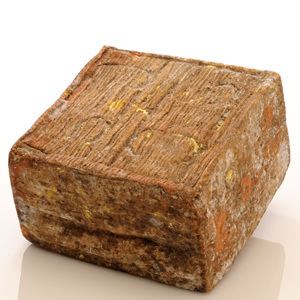Type Cheese Main ingredients Milk | Serving temperature Cold | |
 | ||
Similar Valtellina Casera, Stracchino, Silter, Bitto, Taleggio cheese | ||
Salva Cheese from Crema is a PDO table cow’s milk cheese, made with raw curd; it is a washed rind cheese that undergoes a medium or long aging period. Salva is traditionally eaten in the central plain of Lombardy and produced particularly in the area of Crema, Bergamo and Brescia.
Contents
It is also produced in the provinces of Lecco, Lodi and Milan. Salva has many similarities to quartirolo, as well as differences, like longer aging and a major aromatic complexity.

Origin of the name
Its name come from the idea of “salvare il latte”, which is the tradition of using or saving the milk left over from the spring process of cheese-making, which is then used to produce Salva cheese. It is called Salva cremasco although it is more often produced elsewhere, because Crema was the main place of trading and consumption of this cheese, like it has occurred to other kinds of cheese (ex. Bra, Gorgonzola).
History

Its origins date back to the 17th and 18th centuries, when it was already possible to identify on some decorative truckles the cheese profile, which looks like a parallelepiped, with a thin crust and a pastry with very rare holes in the pastry (called "occhiature") and straw-white colour. Salva has a close connection with the seasonal transhumance that the “bergamini” (shepherds from Bergamo) undertook with their cows, coming down from the villages in the valleys of Bergamo and Brescia towards farms in the plain in autumn and going back in spring. During these trips the milk overproduced, particurarly plentiful in spring, was transformed into "strachì da Salva", so that it could be preserved in the hot season. It seems that the warlord Bartolomeo Colleoni enjoyed this cheese so much that he had some truckles delivered during his military inspections at the fortificatios of Crema.
Production
For its production full-cream pasteurized milk is used. Its coagulation, at 36 °C (97 °F), lasts 30 minutes, then the curd is twice chopped in extremely little fragments. Finally, the bulk mass is put for 8–16 hours in a damp location. The aging lasts either 3–5 months (in this case the product has an aromatic and fragrant flavour), or 8–12 months. There are rare truckles aged up to 36 months. Sometimes the crust is flavoured with marcs. The truckle has a parallelepiped shape with a plain squared side 11/13 cm or 17/19 cm long and a straight bowed side from 9 to 15 cm. The average weight spaces from 1.3 to 5 kg (2.9 to 11.0 lb). The crust is washed with water and salt, while as concerns cheese aged for a longer time it is oiled. In the past, linseed oil was used. In this way, some yellow mildew is built up, which penetrating into the crust increase the flavour. On 21 November 2002, the consortium for the safeguard of the Salva Cremasco was set up, and then this kind of cheese was qualified as PDO, due to its typicalness and well proved productive tradition. The cheese is identified, apart from its cubic or parallelepiped shape, due to its typical brand with capital letters S C on its face.
Salva and “tighe”
The most typical use of this kind cheese in the area of Crema is the “Salva con le tighe” (green Lombard peppers in vinegar). The Salva is cut in little cubes, with tighe grossly cut into stripes without seeds. Then it is flavoured with a bit of olive oil. According to taste, wehave to let the cheese rest to become tasty, without exceeding as oil makes the cheese macerate.
Other recipes
The salva can also be used in a variety of other dishes, going from starters to desserts, and from first to second courses.
